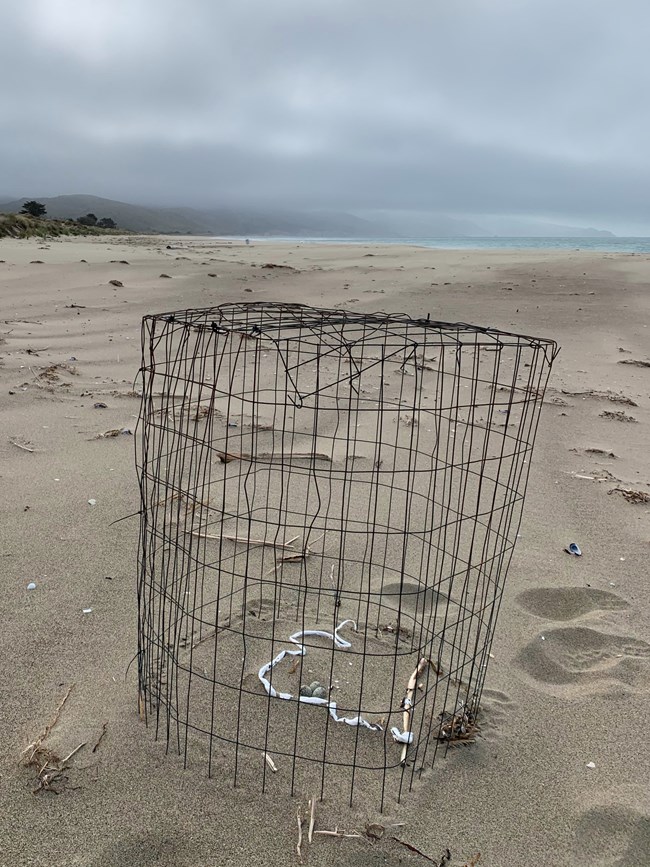Last updated: October 4, 2023
Article
Researchers Examine Links Between Raven Activity and Snowy Plover Nest Success as 2021 Breeding Season Begins

NPS / Matt Lau
April 2021 - When common ravens devour western snowy plover eggs, they leave behind empty nest cups with tracks as evidence of the depredation event. Plover nests surrounded by raven tracks have become a worryingly familiar sight for San Francisco Bay Area Network biologists at Point Reyes National Seashore. So this past winter, they decided to take a closer look at their past plover monitoring data. With new analyses, they were able to better understand the problem, and also the effectiveness of continuing the use of nest exclosures.
Nest exclosures are the mesh fences that biologists sometimes place around and over nests. They exclude most predators while allowing the plovers to come and go as they please. Ravens accounted for 33.7% of all plover nest failures and 40.8% of unexclosed nest failures between 2002-2020.
First, biologists looked at the number of ravens they spotted per hour during their western snowy plover breeding surveys. They found that raven activity is highest at Kehoe Beach and the Abbotts Lagoon Restoration Area. Plover pairs in these same areas fledge fewer chicks than those at other sites. Then the biologists used statistical modeling to check whether raven activity is in fact hindering long-term plover nest success. Sure enough, they found that it is. At the same time, they found that nest exclosures significantly improved nest success by protecting nests from depredation. This new statistical evidence that nest exclosures are important to long-term plover productivity in Point Reyes will help the park make crucial decisions about how much to use them. This research is newly published in the journal Human-Wildlife Interactions.

NPS / Matt Lau
Meanwhile, the 2021 western snowy plover breeding season at Point Reyes has begun. At least 11 pairs of plovers are breeding along the Great Beach and Limantour Beach. The monitoring team also found the first nests of the season on April 2nd at the north end of Kehoe Beach. As of April 22nd, they’ve found a total of six nests, including three on Kehoe Beach, two on North Beach, and one on Limantour Beach. Common ravens depredated two nests, an unknown predator depredated two more, one nest was abandoned for unknown reasons, and only one nest remains active. The team expects to find several more nests in the next couple weeks as more pairs establish their nesting areas.
For more information
- Lau, Matthew J., Becker, Benjamin H., and Press, David T. 2021. Common Raven Impacts on the Productivity of a Small Breeding Population of Snowy Plovers, Human–Wildlife Interactions: Vol. 15: Iss. 3, Article 13.
DOI: https://doi.org/10.26077/ygkm-9b80 - San Francisco Bay Area Network Western Snowy Plover Monitoring webpage
- Pacific Coast Science & Learning Center Western Snowy Plovers webpage
- Contact Snowy Plover Ecologist Matt Lau
